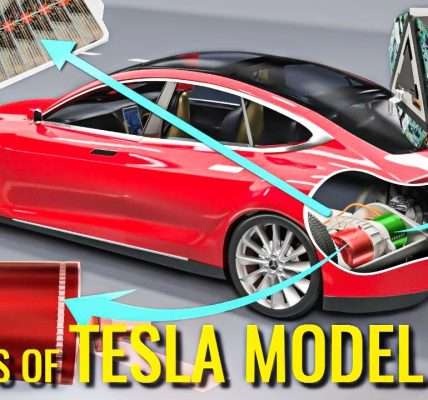Embarking on an automotive engineering career is choosing a path that blends creativity, problem-solving, and a passion for vehicles․ It’s a career trajectory that isn’t just about cars; it’s about shaping the future of transportation, pushing the boundaries of technology, and contributing to a more sustainable world․ Unlike some more traditional engineering fields, automotive engineering offers a unique opportunity to work on tangible, dynamic products that directly impact people’s lives․ This field demands a multifaceted skill set, requiring not only a strong grasp of engineering principles but also an understanding of design, manufacturing, and market trends․
The Diverse Landscape of Automotive Engineering
Automotive engineering isn’t a monolithic field․ It encompasses a wide array of specializations, each offering its own unique challenges and rewards․ Here are just a few examples:
- Design Engineering: Focusing on the aesthetics and functionality of vehicle components, from the exterior body to the interior layout․
- Powertrain Engineering: Developing and optimizing engine, transmission, and electric drivetrain systems for performance and efficiency․
- Manufacturing Engineering: Streamlining the production process, ensuring quality control, and implementing advanced manufacturing techniques․
- Testing and Validation Engineering: Rigorously testing vehicle performance, safety, and reliability through simulations and real-world trials․
- Autonomous Vehicle Engineering: Developing the software, sensors, and control systems that enable self-driving cars․
Essential Skills and Qualifications
While a strong academic foundation is crucial, success in an automotive engineering career demands more than just textbook knowledge․ Here are some key skills and qualifications employers look for:
- Bachelor’s or Master’s Degree: A degree in mechanical engineering, electrical engineering, or a related field is typically required․
- CAD/CAM Proficiency: Experience with computer-aided design and manufacturing software is essential for design and manufacturing roles․
- Problem-Solving Skills: The ability to analyze complex problems, identify root causes, and develop innovative solutions․
- Communication Skills: Effectively communicating technical information to both technical and non-technical audiences․
- Teamwork Skills: Collaborating effectively with other engineers, designers, and technicians․
Beyond the Basics: Specialized Knowledge
Depending on your chosen specialization, additional knowledge and skills may be required․ For example, powertrain engineers need a deep understanding of thermodynamics and combustion, while autonomous vehicle engineers need expertise in computer vision and machine learning․
The Future of Automotive Engineering
The automotive industry is undergoing a period of unprecedented transformation, driven by factors such as electrification, autonomous driving, and connected car technology․ This creates exciting opportunities for automotive engineers who are willing to embrace new challenges and adapt to evolving technologies․ The demand for skilled engineers in areas such as battery technology, electric motor design, and autonomous vehicle software is expected to grow significantly in the coming years․
Is Automotive Engineering Right for You?
An automotive engineering career offers a dynamic and rewarding path for individuals who are passionate about vehicles, technology, and innovation․ If you are a creative problem-solver with a strong technical aptitude and a desire to shape the future of transportation, then this may be the perfect career for you․
Venturing Off-Road: Unconventional Paths in Automotive Engineering
While the well-trodden paths of design and manufacturing are undoubtedly important, there’s a whole wilderness of opportunity waiting to be explored within automotive engineering․ Consider the realm of biomimicry in vehicle design․ Imagine engineers studying the scales of fish to develop drag-reducing surfaces for cars, or mimicking the shock-absorbing properties of woodpeckers’ skulls to create safer vehicle structures․ This isn’t science fiction; it’s a burgeoning field ripe for innovation․
Another fascinating avenue lies in the intersection of automotive engineering and sustainable materials․ Forget steel and aluminum; picture vehicles constructed from bamboo composites, mycelium-based plastics, or even recycled ocean plastic․ This requires engineers to not only understand material properties but also to develop entirely new manufacturing processes and address concerns about durability and safety․
The Rise of the Automotive Artist
Furthermore, let’s not underestimate the power of artistic expression within engineering․ The lines between engineering and art are blurring, with designers incorporating elements of sculpture, fashion, and even performance art into vehicle concepts․ Imagine a car whose exterior dynamically changes color and texture based on the driver’s mood, or a vehicle that interacts with its environment through light and sound․ This requires a unique blend of technical expertise and artistic vision․
Beyond the Assembly Line: The Entrepreneurial Engineer
While many automotive engineers find fulfilling careers within established companies, there’s a growing trend of engineers striking out on their own to create innovative solutions․ Consider the possibilities of niche vehicle development․ Instead of mass-producing generic cars, imagine designing and building specialized vehicles for specific purposes, such as off-grid electric vehicles for adventurers, autonomous delivery robots for urban environments, or even personalized race cars tailored to individual drivers;
The entrepreneurial spirit can also be applied to the development of aftermarket technologies․ This could involve creating advanced driver-assistance systems for older vehicles, developing energy-efficient charging solutions for electric cars, or even designing interactive dashboards that provide drivers with personalized data and insights․
The Symphony of the Future: Collaboration and Innovation
Ultimately, the future of automotive engineering will be defined by collaboration and innovation․ It will require engineers to work across disciplines, to embrace new technologies, and to think outside the box․ It will require them to be not only engineers but also artists, entrepreneurs, and visionaries․ The road ahead is uncertain, but one thing is clear: the journey will be exhilarating․
As the automotive landscape continues to evolve at breakneck speed, the future automotive engineering career path will demand adaptability, creativity, and a relentless pursuit of pushing boundaries․ It’s a journey for those who dare to dream and turn those dreams into reality, one vehicle at a time․

